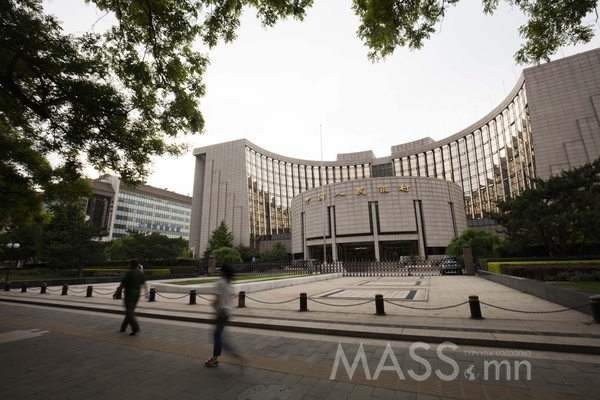
The Chinese yuan continued to weaken against the US dollar on Tuesday hitting its lowest in five years.
The central parity rate of the yuan had dipped by another 10 basis points to 6.6971 against the dollar on Tuesday. The rate is the price at which the yuan trades against the US dollar, and is set up by the People’s Bank of China (PBOC) prior to a day’s trading session based on the closing figure of the previous day.
The spot exchange rate, the price to exchange currencies for immediate delivery, had fallen to 6.70.
The plunge did not catch the market by surprise as the US dollar has been on an appreciation streak after the military coup attempt in Turkey and expectations of a US interest rate hike as early as this month. Meanwhile, the UK’s decision to leave the EU has weighed down on the euro and sterling against US greenbacks.

The People's Bank of China, the country's central bank
An expectation-beating GDP growth of 6.7 percent in the second quarter of 2016 in the world’s second largest economy had given investors as well as observers a breather about Chinese economy.
However, weakening performance in the property market and export serves as a reminder of the headwinds ahead.
Policymakers are finding themselves caught in an ever more delicate situation as different problems require sometimes contradictory solutions. Stemming the domestic tide of capital outflow demands a stable currency valuation in the global market, meanwhile the yuan’s depreciation could help with exporters.
In the meantime, the PBOC also walks on a thin line injecting the market with sufficient liquidity all the while refraining from strong monetary stimulus which would cause the yuan to weaken further. To that mix, is added the commitment of currency liberalization.
So far, the PBOC has relied on open market operation to prevent liquidity from drying up. On Tuesday, the central bank pumped 60 billion yuan (nearly 9 billion US dollars) into seven-day reverse repos, a process by which central banks purchase securities from banks with an agreement to sell them back in the future. Given that 30 billion yuan's worth of repos matured on Tuesday, the central bank effectively injected 30 billion yuan into the local monetary market.

Several international banks had downgraded their expectation for the yuan’s value in 2017
The low was expected as the yuan’s value was still pegged onto the dollar which has been on an upward track, said Han Huishi, a foreign exchange analyst of China Construction Bank.
“The policy priority for the Chinese authority should be keeping the market’s anticipation at bay for a steep depreciation of the Chinese currency so as to head off investors panic dumping the yuan for dollar assets”.
The "depreciation trend" in the yuan's value is not going to get out of hand, said Hu Yuexiao, chief economist of Shanghai Securities, adding that the internationalization of the yuan would rule out a plunge in its value.
The Chinese central bank will not intervene in the market unless the yuan slips below 7 against the dollar which is a “psychological threshold” for official intervention, commented Liu Dongliang, senior analyst of China Merchants Bank.
Hu Zhipeng of Royal Bank of Scotland disagreed, suggesting that the trigger for a central bank intervention was capital outflow rather than currency depreciation.
The yuan to dollar might be inching down to 7:1 by mid-2017, Hu said.
Several international banks had downgraded their expectation for the yuan’s value in 2017. Earlier Goldman Sachs and Merrill Lynch moved their forecast down to 7 against the dollar while the UBS’s calculation was much softer, standing at 7.2.
Uncertainty across the world may have prompted China to pursue safer storage of its assets
Uncertainty across the world may have prompted China to pursue safer storage of its assets. Being the top buyer of US Treasury securities, China had increased its holding in May by 1.2 billion US dollars to 1.244 trillion, the latest data from the US Treasury Department showed on Monday, following a cut on the holding in April and March.
China's foreign exchange reserves increased by 13.43 billion US dollars in June from the previous month to 3.21 trillion US dollars, central bank data showed on July 7.


 Архив
Архив